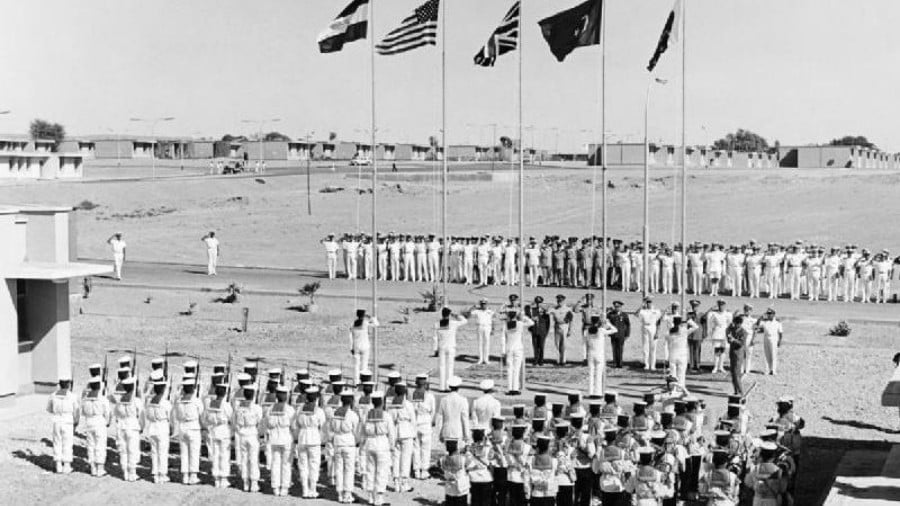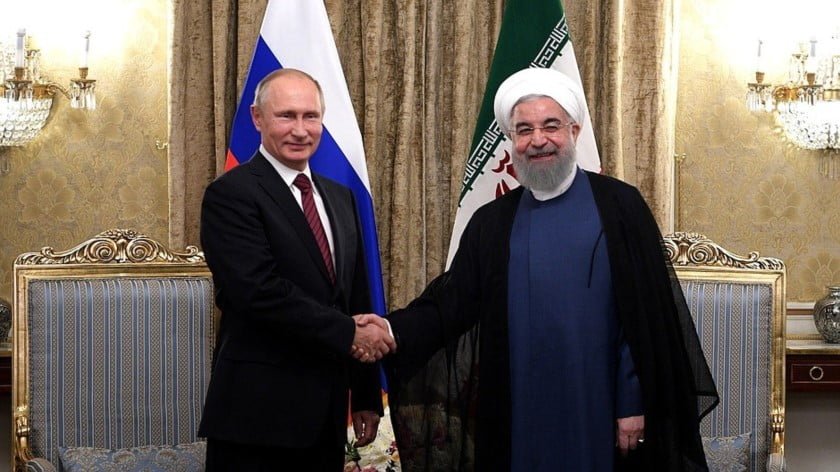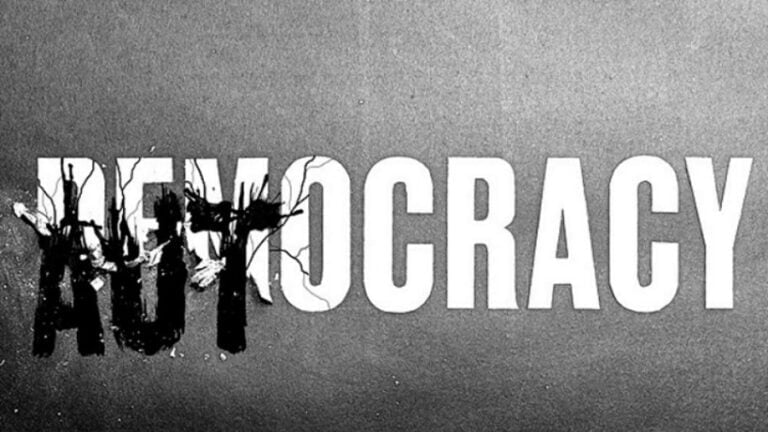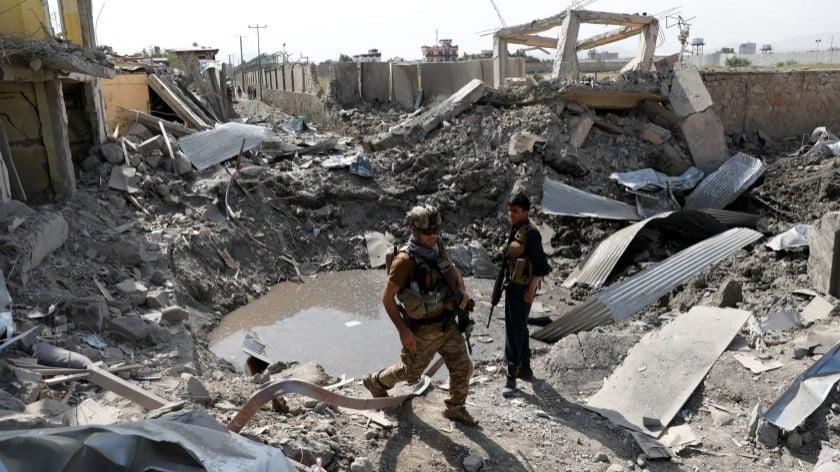Inside Trump’s Disastrous ‘Secret’ Drug War Plans for Central America
Nothing really puts you in your place quite like getting shot at in another country. All gringo arrogance vaporized in an instant. Choking from teargas. Lungs aflame. Reeling blind through unknown streets just ahead of the death squads. Abandoned by your fellow correspondents, who were all shrewd enough to have put on their gas masks and taken cover before the soldiers launched shock grenades and opened fire on the crowd.
Yes, whenever a quick and brutal dose of humility is called for I can always flash back to the Honduran capital of Tegucigalpa in the summer of 2009, during the U.S.-backed military coup against elected president Manuel “Mel” Zelaya. A swift recall of live rounds slamming into unarmed demonstrators—of my own self at the mercy of those sadistic soldados—and all false pride just fades away.
The crowds had come in their thousands and their tens of thousands to protest the army’s kidnapping of old Mel, who was as famous for his cheesy sombrero-and-mustache look as he was for his tepidly liberal politics. In any case, soldiers arrived at his house one pleasant morning in late June, frogmarched him in his PJs to the massive American airbase just outside Teguc, and—wham, whack, whoosh—Mel was gone from the country within hours. The military then forged a letter of resignation, installed a sham replacement as head of state, and the coup was complete.
Or so they thought. But then came the massive marches. Made up of indigenous Garifuna and Linca and Meskit peoples. Campesinos, feminists, and constitution-lovers of all stripes. These motley flocks of patriots rose up in small villages and major cities across the nation to sing and and chant, to beat drums and dance, and to demand their country back.
Like many of its neighbors in Central America, the “U.S.S. Honduras” is run by a small and incestuous clan of oligarchs. These right-wing cliques also control the military, and are closely allied with the American corporations (like Dole and Chiquita) that gifted us with the handy phrase “Banana Republic” in the first place. Well, those Honduran overlords had had enough of Mel Zelaya daring to raise the minimum wage, lobbying for lunch programs at public schools, and suggesting democratic plebiscites on constitutional reforms. So he had to go.
And all the folks marching in the street? Of course they had to go, too. Back to the barrios from whence they came! Back to the banana and palm-oil plantations! To affect the end of the protest fiesta, the authorities broke out the state-of-the-art weaponry—including sonic disruptor cannons—that Uncle Sam had given them for waging the “War on Drugs.” They then commenced to blast away at peaceful protesters, or anybody else who got in their way, including a foolish-proud, white-boy reporter who thought he could hack it without a gas mask.
Scores were killed or wounded during what Hondurans still call El Golpe de Estado (the phrase means “coup d’état”; those who backed it are called golpistas). To further intimidate the opposition, and break the will of the nonviolent Resistencia movement, human rights centers sheltering victims were deliberately targeted by government troops. Well, we all learned the hard way back in those days. But at least we did learn just how dangerous democracy-hating, Third-World warmongers can be.
The same can’t be said of the Trump administration. As of now, it’s set to double down on the same hard-line, authoritarian strategies that enabled the Honduran president-snatching in the first place—and resulted in the country’s descent into a gang-ridden, apocalyptic nightmare from which it has yet to awaken.
The “Northern Triangle” Tangle
The corner of the Central American isthmus consisting of Guatemala, El Salvador, and Honduras is referred to by military strategists and policy geeks as the “Northern Triangle.” Over the last 10 years or so it’s become one of the deadliest regions on earth. Young people are particularly impacted. The homicide rate among youths is a staggering 90 per 100,000, in part due to rampant gang violence. Based on murders per capita, the Triangle is far more dangerous than Mexico, no matter what Mr. Trump says on Twitter.
The Triangle is an important stopover on the smuggling routes that connect the cocaine breadbaskets of South America with their cartel distributors in Mexico. As such it suffers under powerful maras (gangs) with names like Barrio 18 and the Salvatruchas—both of which originated in the U.S. prison system, incidentally, and arrived in Honduras thanks to mass deportations.
These street gangs are tangentially linked to the cartels operating out of Mexico, as well as places like Colombia. The maras are often hired to hack out small airstrips in the jungle for drug-smuggling planes, or to run overland narcotics shipments across international borders. And they find plenty of time to torture local residents. The gangs rule entire neighborhoods, specializing in rape, forced recruitment tactics, abduction for ransom, drug dealing. Blackmail is rampant, and they often collaborate with local authorities in shaking down their victims.
Gang violence is one of the driving factors behind the Central American migrant crisis, which has sent hundreds of thousands fleeing northward, many of them children.
All that mayhem finally caught the attention of the Trump regime. But, as usual when it comes to narcotics interdiction efforts under Trump, the proffered solution seems to be more show than substance—all at the expense of American taxpayers.
A shadowy summit last month in Miami brought together Vice President Mike Pence, high-powered cabinet members like Secretary of State Rex Tillerson, the leaders of all three Triangle nations, and officials from at least nine other countries. The plan they espoused? Spend untold millions more dollars on a strategy that, according to experts, is guaranteed to fail. So what’s not to like about that?
Co-hosted by Mexico, the two-day session was grandly touted as “The Conference for Prosperity and Security.” The first phase focused on wealth creation; it went down at Florida International University on June 15, and was immediately met by protests on campus.
“We’re in this together,” Pence told Central American leaders at the end of the day. He then went on to emphasize that sense of fellowship by adding, “President Trump has already taken decisive action to protect the American people from the harshest consequences of illegal immigration…” In other words: We’re here for you, neighbors—just stay the hell on your side of The Wall.
The second stage was geared toward the “Security” side of the equation, and took place the next day behind closed doors at the SOUTHCOM military base. Because press access was restricted, it’s hard to know all the specifics that were discussed. But there are clues that point to a coming crackdown.
Despite the cloak-and-dagger staging of the conference, some of the Trump administration’s harsh plans for escalating the Drug War have already been hinted at in speeches, budget proposals, and conference calls with the press. And critics contend this “old-is-new” approach is unlikely to result in either “Prosperity” or “Security” in the region.
An editorial on the conference by the watchdog group InsightCrime referred to the Trump doctrine for the Northern Triangle as “heavy-handed” and “going backwards.” It also pointed out that all three leaders from the Triangle countries in attendance had been accused of corruption or involvement with drug traffickers or both—in fact the vice president of El Salvador showed up in Miami already under indictment back home.
The InsightCrime op-ed concluded by lambasting Trump’s vision “that the main threats to U.S. national security come from impoverished migrants, the majority of whom have no ties to the organized crime groups, gangs, or drug traffickers that safely operate under state protection in Central America.” (Italics added.)
The statement issued by Doctors Without Borders about the goals set forth in Miami is even more damning. Likening conditions in the Triangle to those found in “some of the world’s deadliest war zones,” the group estimates the number of immigrants bee-lining it out of their native countries to be about 500,000 a year.
As for the solutions proposed by Trump’s proxies, Doctors Without Borders accused conference planners of “turning a blind eye” to the emergency and went on to say, “Addressing the crisis in Central America cannot only be about future prosperity and security; it must also be about saving and protecting lives today.”
Militarization Nation
There are two schools of thought on how you help countries climb out of multifaceted maelstroms like the one currently walloping the Northern Triangle. The first, as favored by the Obama administration, is an aid-based approach, usually involving democracy-building incentives, humanitarian programs, and the strengthening of law enforcement and judicial actors.
Obama’s legacy in the region is far from pristine, but to his credit he intuited that the coup in Honduras was a mistake not to be repeated. (He also understood the importance of development to affect positive change even if, as with Afghanistan, he thought the military had to play a major role.)
The second method is just to send on down millions of dollars for “security assistance”—oversight be damned—and hope for the best. Care to guess which strategy Team Trump prefers?
POTUS’ congressional budget proposal called for a $54 billion increase in military spending, with an undisclosed amount of that earmarked for ramping up the counter narcotics campaign and barricading borders against migrants. Meanwhile the State Department and the U.S. Agency for International Development (USAID) would see their budgets slashed by about 39 percent from last year’s levels under the Trump budget.
Economic aid and assistance to Central America is projected to fall from $520 million down to about $300 million, according to a study by the Washington Office on Latin America. All that “charity” chopping will directly endanger social and educational programs in the Northern Triangle—further reducing quality of life overall, and making immigration (legal or otherwise) all the more tempting, observers say.
The focus of the Trump agenda is not about solving the root problems like poverty and government corruption that drive gang violence and narcotics trafficking, says Jake Johnston, a research associate at the Center for Economic and Policy Research (CEPR) in Washington, D.C.
Johnston refers to the Trumpite approach as “outsourcing security to countries with checkered pasts [on] human rights.” Far from winning the Drug War, or curbing the flood of migrants, he tells The Daily Beast, “empowering these sectors is only going to exacerbate those problems.”
But strong-arming our way to victory remains a popular fantasy, especially among Trump’s all-gringo cabinet. Johnston says Homeland Security boss Kelly—also a retired general and the former director of SOUTHCOM—seems determined to apply the belligerent approach in Central America, and is responsible for the “reprioritization” away from programs like USAID, which directly targeted problems like economic inequality in the region.
“It’s unprecedented that the conference took place behind the gates of a military barracks,” says Johnston. “The security apparatus and the Pentagon’s specific plans [for the Triangle] are incredibly opaque,” although the overall implications are clear enough.
“The writing’s on the wall that this is a shift away from soft power to hard power,” says Johnston, who’s been conducting research into Latin American economic issues for the last decade.
During a Senate hearing in late May, police officers from multiple jurisdictions in the U.S. lectured lawmakers about just how ineffective, even dangerous, the Trump administration’s brand of steroidal, community-alienating policing can be when it comes to fighting entrenched gangs like the Salvatruchas.
Nevertheless, says Johnston, “in the future, U.S. diplomacy in the region will likely be wearing a uniform instead of a suit.”
Cops, Soldiers, and Cartels on the Same Team
Over the last two decades of the Drug War, the Pentagon’s penchant for propping up repressive generalissimos in places like Mexico, Colombia, and Central America has caused widespread suffering among the populations of those nations, including a plague of extrajudicial killings.
To get a precise read on current conditions in heavily occupied regions of the Triangle zone, I reach out to the national coordinator for the Honduran Solidarity Network (HSN), Karen Spring, who is based in Tegucigalpa.
“Honduran society is already very militarized,” said Spring, in a phone interview on the eve of the Miami conference. “Since the 2009 coup they’ve created a whole series of new police and military units like the Tigres, who are vetted and trained by the U.S. government.”
Following the 2009 coup the U.S. has sent some $200 million in security aid to Honduras, despite a petition signed by dozens of American congressmen asking for a boycott over human rights concerns. And yet in spite of all that martial funding the country remains mired in one long, slow-burn Armageddon, with one of the highest homicide rates on the planet.
At the same time, says CEPR’s Johnston, the post-coup years have also seen “a real spike in poverty and economic inequality” despite the millions flowing south from Washington.
According to Spring, of the Solidarity Network, the militarization craze has also sparked a rise in human rights abuses, including right-wing death squads tasked with eliminating political dissidents. The fact that “the military is not trained to be providing civilian security” is part of the problem Spring says. But the troubles go far deeper than that.
“The police and military are known to be linked to, or infiltrated by, the drug cartels,” says Spring, who first went to Honduras eight years ago as a human rights worker sent down in the wake of the Zelaya takedown.
(Full disclosure: I knew Karen Spring back in those woeful, post-coup days in Honduras, and have seen this brave young woman stand her ground against civil abuses by armed actors more than once.)
“Even high-level military officials are known to be involved in drug trafficking,” she says, and yet, “impunity rates have not gone down. If you are not punishing people who are corrupt—especially people in positions of power—what deters them from committing crimes?”
Indeed, that corruption permeates Honduran politics at the highest levels, according to a recent report by the Carnegie Endowment for International Peace (PDF), which describes the country as being run by “intertwined, or ‘integrated,’ … kleptocratic networks.” Even the son of the former president was recently accused in a New York courtroom of working with organized crime.
Death and (War) Taxes
“The way that gangs down here are portrayed in the international press and by the government is that they’re these autonomous actors that take over communities and prisons,” says Spring, when our conversation turns to the dreaded maras.
“That’s an elaborate narrative,” she adds, and a false one.
“I work in urban communities every day—and nobody here believes gangs are acting on their own.” Instead, they “work alongside and are enabled by a corrupt police force.”
In Spring’s eyes, the social-aid-first ethos espoused by President Obama—who also took his fair share of flack for sending down questionable military aid to Honduras—has done little or nothing to curb connivance between authorities and organized crime. Trump’s hardball tactics, on the other hand, are “much worse for everybody.”
“I don’t think any aid from the U.S. to Honduras has made any changes for the majority of the population,” she says, and as evidence cites the fact that “60 percent of the country is still in poverty.”
The soft-power initiatives seem to have proven useful in some cases, but Spring also accuses them of “promoting very specific interests” that don’t “have an impact on security or why people live in fear.”
Johnston, of CEPR, also wonders if the soft programs are adequate. “State and USAID have rolled out a number of community-driven crime prevention programs and held them up as illustrative of their success but the reality is we have little knowledge about their actual effectiveness.”
The playbook on social development might need fine-tuning or expansion, but it’s far better than indiscriminately empowering crooked goon squads. As human rights worker Spring puts it, “hard power just doesn’t do anything to address the problems that are perpetuating” Honduras’ downward spiral.
To illustrate the failure of the stick-before-carrot strategy, she goes on to describe a neighborhood where she works in Tegucigalpa:
“The 18 Street gang controls the community,” Spring says, and all local business owners must provide a regular quota for the privilege of living under thug tyranny, or risk being shot.
“It’s literally called a war tax,” she says. “An impuesto de guerra,” and from taxi and bus drivers to “the women selling tortillas,” everyone has to pay it.
A special unit of military police set up a permanent base on the same barrio’s soccer field, back in 2013, which has put the kibosh on local futbol games as well—one of the few innocent pastimes formerly available to local kids.
Although the borough is now an occupied zone, “everybody is still paying the war tax,” Spring continues. “Extortion is still going on. There’s still a high level of control in the neighborhood by the gang.”
In fact, the barrio taxi stand “is right in front of the military-police base—but the drivers are still paying” tribute to the gangs. And that’s not a coincidence.
The blackmailing goes on in front of the barracks where the officers “eat, sleep, and live,” and not by accident, but because “the police are involved in organized crime.” Everyone in the area knows “they’re working with the gangs, extorting people for profit.”
Far from being independent entities, she says, the gangs are often tools of the authorities, who “use them for their own purposes.”
Most citizens know they can’t “call the Honduran police for help” when they’re targeted themselves since “they assume [officers] are involved” with the maras.
“You can’t just walk into a community with a complex social structure and take it over,” Spring says. “Militarization is not solving the problem—it’s making it worse.”
Drug War Redux
As a general rule, when arming oppressive regimes, lack of accountability is the root of all evil. When we send military aid to tropical tyrants we shouldn’t be shocked when they commit atrocities with those expensive and deadly toys.
Take the March 2016 murder of Berta Cáceres, a well-known Honduran activist and winner of the prestigious Goldman environmental prize. During the counter-coup movement, Cáceres gained fame for her habit of striding out to meet with army commanders in the streets of Tegucigalpa, in an effort to stem the assaults on protesters. So it wasn’t a great surprise when her killers were found to have ties to the Honduran military.
(Since her death, at least two other members of Cáceres’ NGO have been assassinated.)
One oft-proffered solution by hawks in Washington is to improve screening and background checks on individual units south of the border. The sad truth, however, is that even our best attempts to vet security forces engaged in the Drug War in Mexico, Central, and South America have proven fruitless.
A prime example of this futility went down in the remote Ahuas region of Honduras, during a botched DEA raid on an indigenous village in Moskitia that left four innocent people dead, and several others wounded.
A State Department chopper team, working with a vetted Honduran unit, opened fire on a boatload of locals after mistaking them for drug smugglers.
“The Honduran door gunner didn’t fire until he received orders from the DEA agent,” according to CEPR’s Johnston, who co-authored an article on the incident. (The DEA declined to respond to an interview request for this story.)
As reported by The Daily Beast last year, another badly bungled Drug-War op took place in Mexico’s Coahuila state, in 2011, when DEA officers shared intelligence with Mexican officers—who then leaked that intel to the Zetas cartel, resulting in a massacre that wiped out parts of an entire town.
“We know from experience that the violent model that has been in place in Mexico is to be intensified in the Central American countries as well,” says Laura Carlsen, director of the Americas Program, in Mexico City. Some 160,000 people have lost their lives since Mexico’s Narco Guerra began in 2006.
“Lack of justice and collusion between [authorities] and organized crime,” are hallmarks of the war in Mexico, Carlsen says. “In cases of assassinations of journalists and attacks on human rights defenders, at least 50 percent of the perpetrators are identified as government officials.” And yet conviction rates hover in the single digits.
Mexico’s Other Wall
A preview of what’s to come in the Northern Triangle is already on display along Mexico’s southern border with Guatemala. That’s where the Pentagon and [DHS Director] Kelly “have placed a real emphasis on militarizing,” says Americas Program director Carlsen.
That plan for shutting down the border—or the Frontera del Sur initiative—was also on the docket at the recent conference in Miami, where Vice President Pence bragged about how it’s already stifled immigration from Triangle-land by 70 percent. Carlsen describes the clampdown as another attempt to “make Mexico pay for The Wall again—only this time on its own southern border.”
Thanks to Frontera del Sur, Mexico now deports more Central American migrants than does the U.S. And in fact our own Border Patrol reports that illegal immigration from the isthmus has been halved since this same time last year. And yet that reduction has come with a price.
The crackdown on the Guatemalan border “has had a devastating impact on migrants,” says Carlsen, who has worked in Mexico since the mid-1980s.
The refugees “are fleeing very serious violence in their country.” Yet instead of offering succor, Mexico is now “attempting to box them in,” in part to curry favor with President Trump and his advisers ahead of upcoming NAFTA negotiations.
Mexican cartels are “delighted at these kinds of policies,” she goes on, “because they criminalize migrants, and turn them into into prey.”
For Carlsen, the Trump team’s script for the Drug-War reboot has “much more to do with repressing people than trying to solve deeper social problems that they’re facing.”
CEPR economist Johnston believes the Trumped up approach to immigration and the Drug War will actually worsen Central America’s ongoing crisis. Nothing presented at the Miami conference will “address the problems that are actually driving people to leave these countries,” he says.
Karen Spring agrees. But she also holds that it shouldn’t be left to the Trump administration to implement ham-fisted fixes in the Triangle. Viable solutions have already been put forth by those closest to the violence, who know the risks and realities best of all—if only the ruling junta would hear them out:
“There has never been a space in Honduras to really listen to some of the proposals that are put forward by local communities and organizations,” explains Spring, who laments what she calls a “failure of democracy” in the Northern Triangle.
Former President Zelaya tried to listen, but his modest attempts to fight economic inequality got him shanghaied by his own troops. Trouble-making crusaders like Bertha Caceres have been assassinated for daring to suggest land-ownership reforms that challenge traditional elites and transnational corporations.
“It’s the voices which have typically been excluded that are trying to promote an alternative,” Spring says, “and for doing so they’re being killed, criminalized, and silenced.”
By Jeremy Kryt
Source: The Daily Beast







